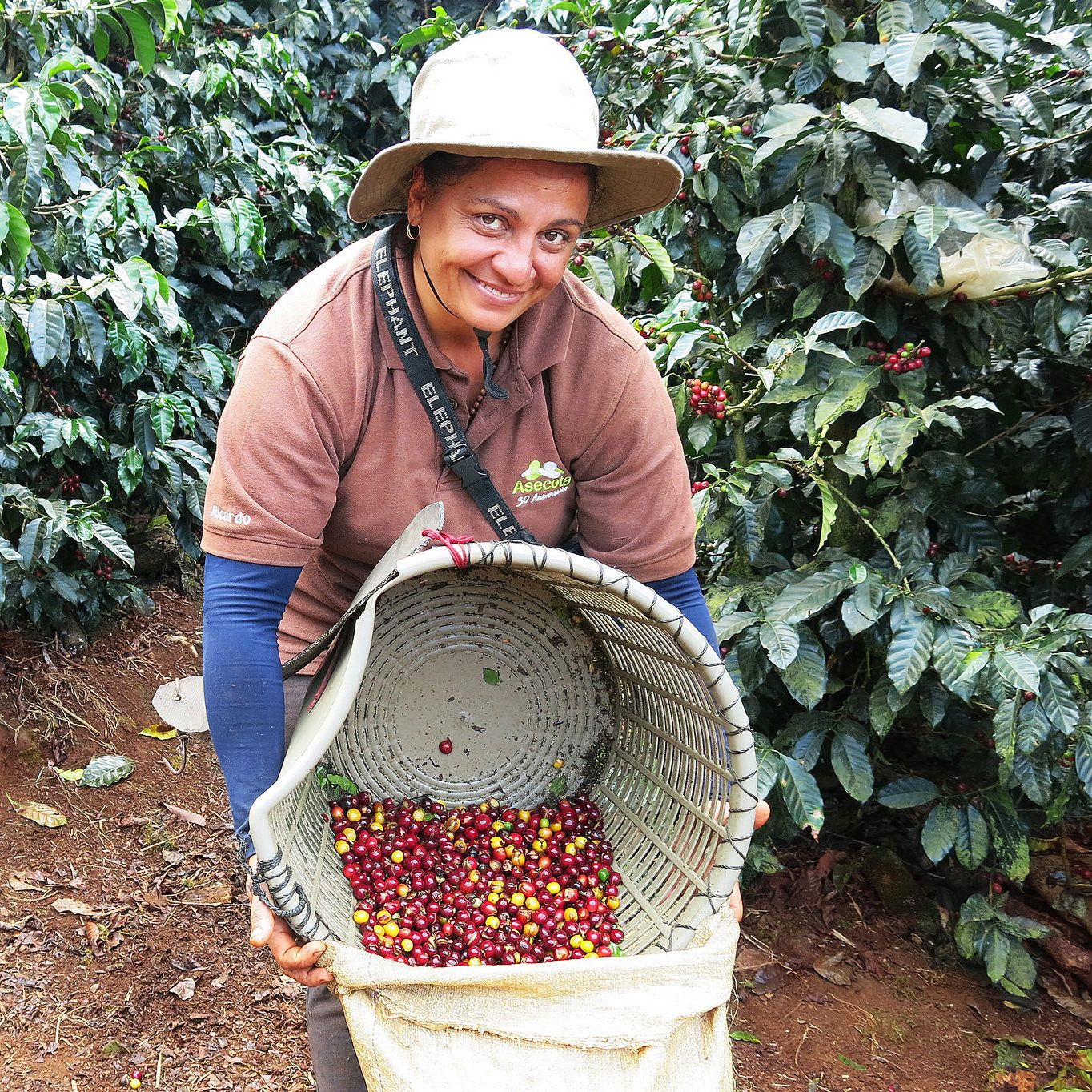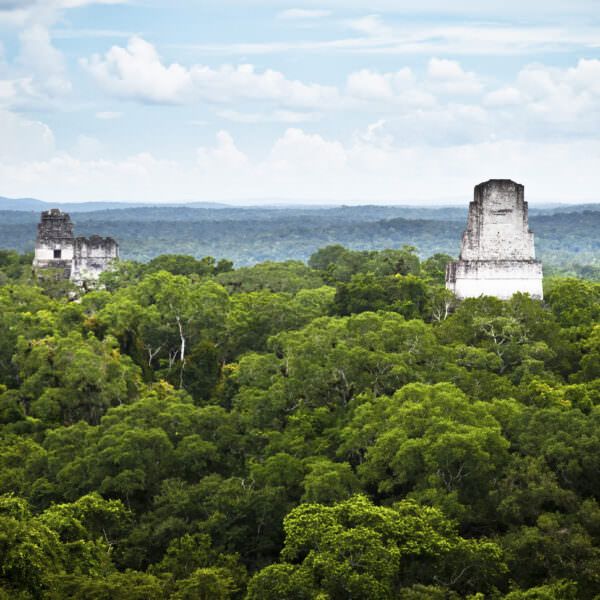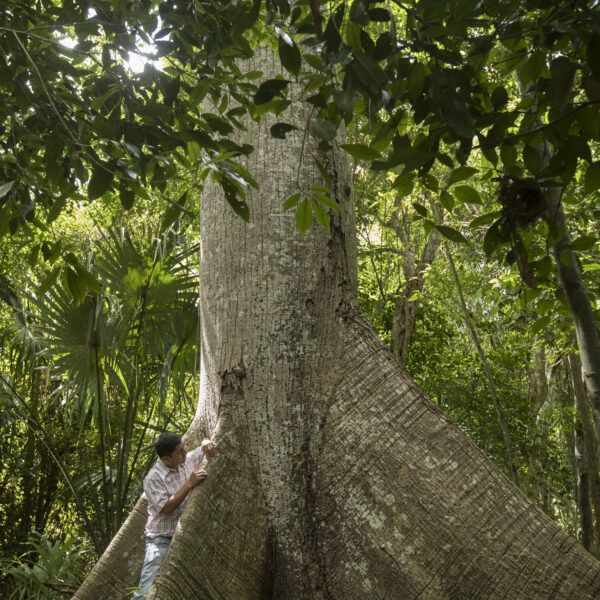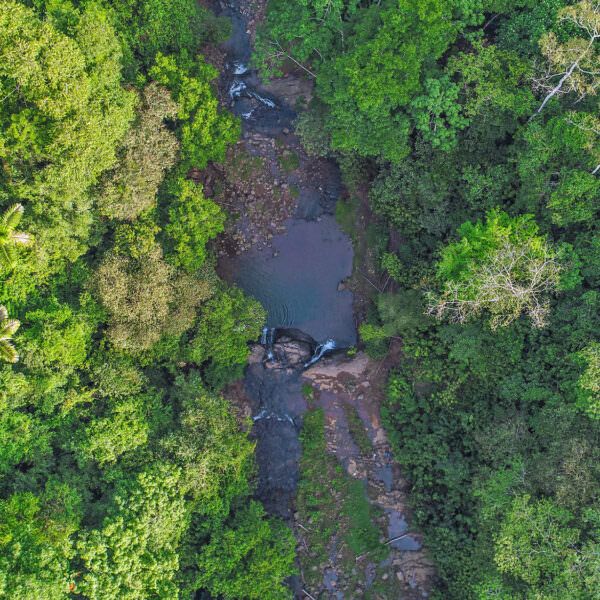Community: The Secret to Stopping Deforestation in Guatemala
The forest concessions of the Maya Biosphere Reserve have boasted a near-zero deforestation rate for 20 years.
Home / Regions / Central America & Mexico / Page 15
Mexico and Central America are world leaders in granting land rights to local and indigenous people—a crucial step in protecting forests. But even with significant gains in rights, forest communities are facing threats from agricultural expansion, illegal loggers, and drug traffickers.

Farmers in Mexico and Central America are already dealing with the effects of climate change: shorter growing seasons, unpredictable rainfall, and a surge in plant diseases and pests. Crops like coffee and bananas could become rare delicacies in the future without bold climate action—but the livelihoods and well-being of farming communities are in jeopardy now.
Our impacts in Mexico and Central America are nothing short of stunning: In areas managed by our partner communities in Guatemala’s Maya Biosphere Reserve, for example, logging has remained at almost zero since 2001—remarkable given that adjacent areas suffer some of the worst deforestation rates in the Americas.
![]()
equivalent annual emissions of greenhouse gases removed from the atmosphere
We provided technical assistance to a group of coffee farmers in Oaxaca, Mexico, who launched an agroforestry project to remove 130,000 tons of greenhouse gas emissions (the annual emissions of 27,000 cars) from the atmosphere over 30 years through reforestation of degraded land.
![]()
have studied our environmental curriculum in Mexico and Guatemala
We not only provide training and curricula to teachers in southern Mexico and Guatemala, but we also help build local networks so educators can sustain this vital environmental education work in their communities for years to come.
In a region hard hit by climate change, the Rainforest Alliance focuses on advancing community forestry, sustainable agriculture, ecotourism, and environmental education to defend vulnerable landscapes and support rural communities.

The forest concessions of the Maya Biosphere Reserve have boasted a near-zero deforestation rate for 20 years.

We are working to grow Mexico’s domestic market for sustainably produced products.

This farm doesn't just grow bananas–it's producing biodiversity, fresh air, and stronger soils.

Sustainably harvested wood is at the heart of this new business run by indigenous Maya women.

Covering close to 2.1 million hectares, Guatemala’s Maya Biosphere Reserve (MBR) is the largest protected area in Central America and home to about 180,000 people, as well as globally important biodiversity and cultural heritage. This report by the Rainforest Alliance, Consejo Nacional de Áreas Protegidas (CONAP), and the Wildlife Conservation Society analyzes deforestation trends in […]

Through the Mexico REDD+ Alliance, the Rainforest Alliance and project partners are implementing community-based climate change education and capacity building activities, using the Forest Conservation and Climate Change Curriculum Toolkit, in order to ensure that indigenous and smallholder communities receive the knowledge needed to make informed decisions about their natural resources and actively participate in […]

Effects of a voluntary sustainability standard system on 106 Latin American tourism enterprises The tourism industry can harm wildlife, plants, and natural ecosystems through habitat destruction, pollution, over-exploitation of natural resources, and visitor traffic to sensitive ecosystems. One approach to mitigate such threats is the application of voluntary sustainability standards, supported by training for tourism […]

As one of the only such projects in the world that is building on community-based production forestry and enterprise, GuateCarbon is generating important lessons with global significance.

This report examines existing governmental incentives that promote sustainable production in the agriculture, forestry, and tourism sectors in eight Latin American countries: Argentina, Brazil, Chile, Colombia, Costa Rica, Ecuador, Mexico, and Peru. These laws and policies demonstrate a commitment to environmental stewardship in Latin America and provide a model for governmental incentives for sustainable production […]

In this brief, the case of Mexican community forestry is presented, with a special focus on the diversity of local enterprises and inter-community associations that have developed over the past twenty-five years, as well as an assessment of some of the main regulatory barriers that communities face in undertaking legal forest harvesting.